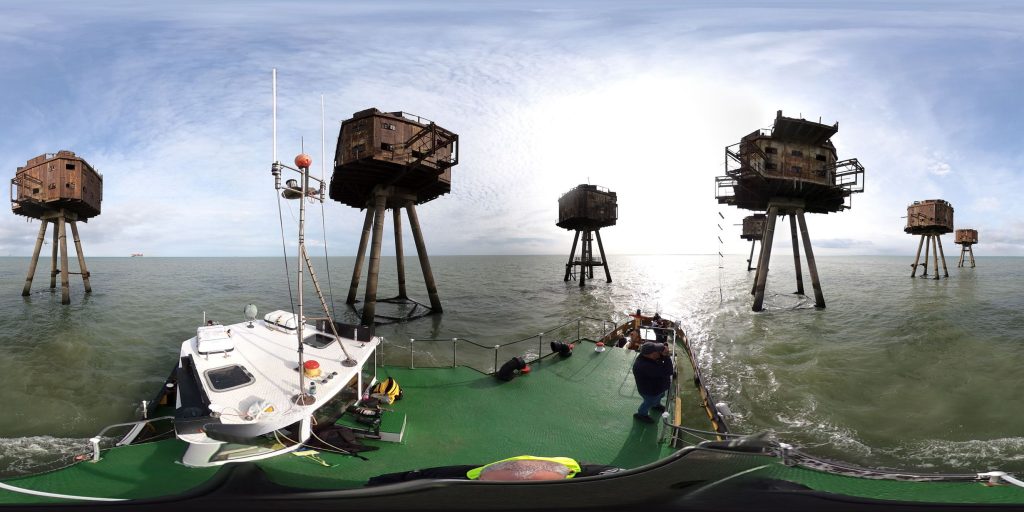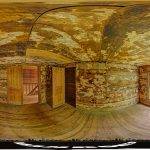Exploring the Enigmatic Redsand Fort: A Legacy of War and Decay
Embark on a thrilling virtual journey into the heart of history with our captivating exploration of the Redsand Fort, a fascinating relic of the past that stands silently in the waters of the Thames Estuary in the United Kingdom. This once-bustling fort, now wrapped in an aura of abandonment, invites urban explorers to delve into its hidden mysteries. Through our immersive 360-degree panoramic images available on Google Maps Street View, you’re just a click away from stepping into this enigmatic world. Experience the fort’s haunting beauty from every angle, feeling the echoes of its storied past surround you as you navigate through each detailed image. Perfect for aficionados of forgotten places, our virtual tour offers a unique glimpse into a piece of history that time has left behind. Join us in uncovering the secrets of the Redsand Fort, and let your urban exploration adventure begin!
Image by: mrbryanejones
Image by: Tom Banbury
In the annals of military architecture, few structures evoke the haunting allure of the Redsand Fort. Located in the Thames Estuary near Sheerness, United Kingdom, these towering sea forts stand as silent sentinels, their rusting frames telling a story of war, innovation, and eventual abandonment.
The Birth of the Redsand Fort
The narrative of the Redsand Fort, also known as the Maunsell Forts, begins in the turbulent era of World War II. Designed by Guy Maunsell, these forts were revolutionary in their concept and execution. They were constructed on land and later towed to their positions at sea in 1943. These structures were more than mere military installations; they were a testament to the ingenuity and determination of those who sought to protect the City of London from the horrors of aerial bombardment.
The forts’ design resembled military-grade bunkers, with their stilts locked deep into the sea bed, creating an imposing presence in the Thames Estuary. This innovative design was a response to the Admiralty’s inquiries about creating forts capable of combating enemy vessels in the English Channel.
A Bastion Against the Axis
During World War II, the Redsand Forts played a pivotal role in defending London. They were strategically positioned to intercept enemy aircraft and E-boats (fast naval attack boats). The forts were successful in their mission, shooting down a significant number of attacking German aircraft and protecting the densely populated city from further devastation.
The Post-War Decline
The end of World War II marked the beginning of the end for the Redsand Forts. The once buzzing towers, housing over a hundred men at a time, were decommissioned in 1958. Their equipment was removed, and they were left abandoned, subject to the relentless forces of nature.
However, their story did not end there. In a twist of fate, the Redsand Forts found a new lease of life as the base for pirate radio stations in the 1960s. Stations like Radio Sutch and Radio City set up shop in these abandoned towers, exploiting their isolation for unregulated broadcasting. This era of pirate radio was short-lived, though, as the stations were shut down in 1967, leading to the forts’ second abandonment.
A Future in Limbo
As years passed, the Redsand Forts fell into a state of disrepair. Subject to the harsh marine environment, they experienced significant weathering and deterioration. Vandalism further accelerated their decay. Despite these challenges, there remains a glimmer of hope for these historic structures.
Efforts to preserve and restore the Redsand Forts have been ongoing. The planned restoration, delayed by the COVID-19 pandemic, aims to transform these forts into an outdoor museum. This project seeks not only to conserve the physical structures but also to preserve their rich history for future generations.
Visiting the Redsand Fort
For history enthusiasts and urban explorers, a visit to the Redsand Forts offers a unique glimpse into a bygone era. The journey to these isolated structures begins with a boat trip from Queensborough on the Isle of Sheppey, an adventure in itself. Visitors can marvel at the architectural ingenuity and the resilience of these sea forts, standing as they do against time and tide.
Conclusion
The Redsand Forts stand as a monument to human ingenuity, military strategy, and the relentless march of time. They serve as a poignant reminder of the past, while their potential restoration speaks of our desire to connect with and preserve history. For those fascinated by the remnants of bygone eras, the Redsand Forts offer a hauntingly beautiful experience, a testament to the enduring spirit of human endeavor in the face of adversity.
If you liked reading about the Redsand Fort, you might be interested in Fort Jackson in Louisiana, the New Barracks at Westerplatte in Poland or the Fort Fincastle in the Bahamas.

A 360-degree panoramic image captured at the abandoned Redsand Fort in the United Kingdom. Image by: mrbryanejones
Do you have 360-degree panoramic images captured in an abandoned location? Send your images to Abandonedin360@gmail.com. If you choose to go out and do some urban exploring in your town, here are some safety tips before you head out on your Urbex adventure.
Unlock the secrets of exploration by diving into precise GPS data available exclusively for an array of hidden gems and hundreds of other captivating sites, all within our members’ section. By investing in a Gold Membership, you’re not just gaining access; you’re securing a key to a vast, global archive of abandoned, untouched, and mysterious locations waiting to be discovered. Embark on your adventure with confidence, knowing every corner of the world can be within your reach. Don’t just observe—explore, discover, and claim the extraordinary journey that lies ahead with our treasure trove of world secrets. Subscribe now and transform the way you see the world!
If you want to start shooting 360-degree panoramic images, you might want to look onto one-click 360-degree action cameras.
Click on a state below and explore the top abandoned places for urban exploring in that state.






